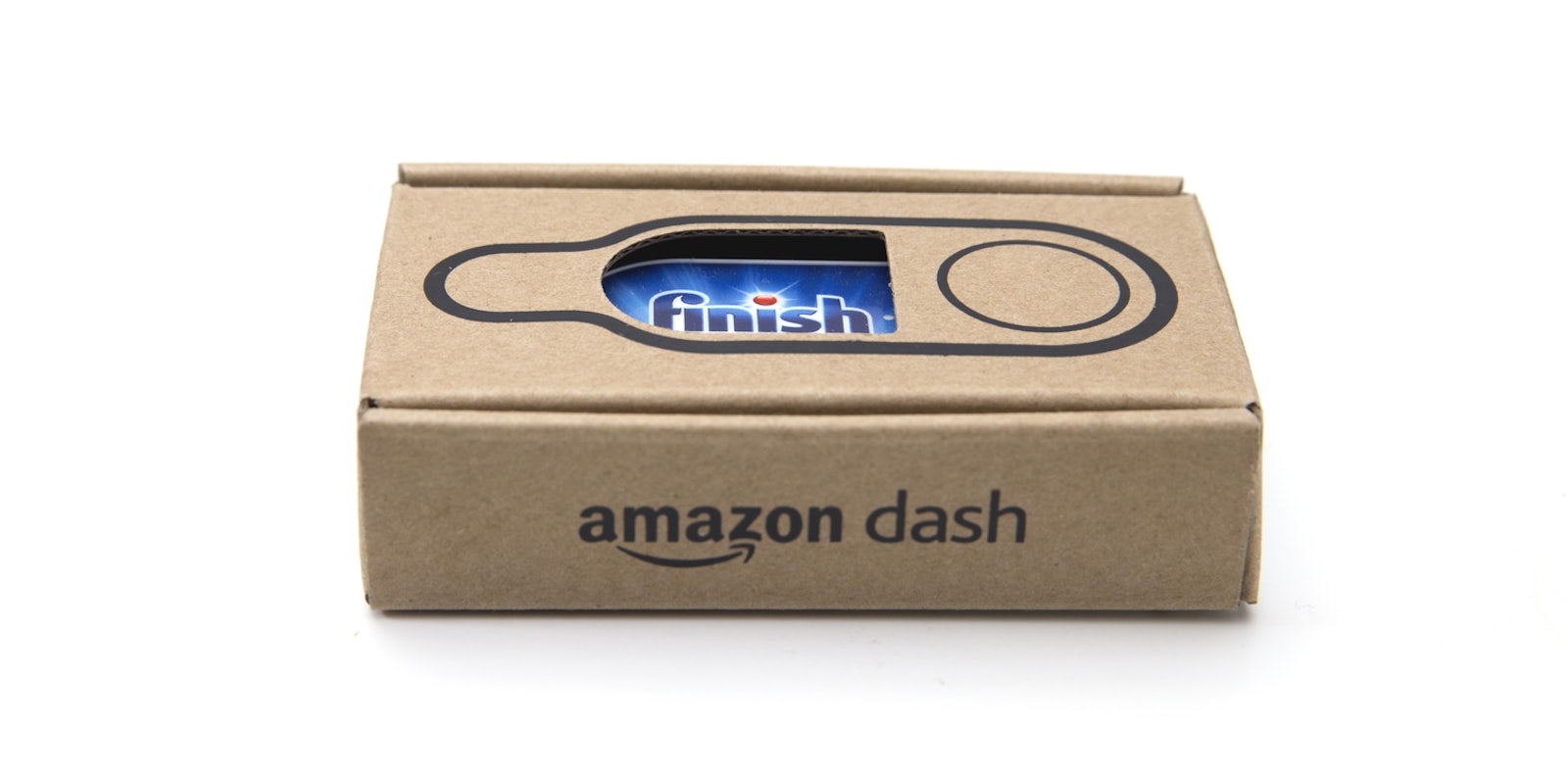In 2015, Amazon announced a product that at the time sounded equal parts dystopian tool and The Jetson’s-level novelty. Dash buttons were a way for Prime members to literally tap (you guessed it) a button, and toilet paper or detergent or granola bars would show up on shoppers’ front porches.
Some thought the buttons were silly or even stupid. Why not just boot up amazon.com or the Amazon app and take 15 seconds to search for “Tide pen” and hit the one-click buy option?
“How lazy had people become? Insert Wall-E reference here!” critics (including the Daily Dot) argued.
Now, any disdain for Dash buttons is a moot point: On August 31, Dash buttons will be discontinued and will stop working entirely.
Amazon stopped selling the devices back in February, leaving users with the option of using its virtual Dash buttons.
Since introducing Dash buttons, Amazon has effectively been out-innovating its own product; virtual Dash buttons only scrape the service. The Amazon Echo and Alexa technologies replaced the buttons and were what the online retailer should have created in the first place.
If clicking cheap, stick-on buttons for access to a large, but still limited handful of Amazon’s massive catalog seemed like a good way to increase frictionless sales, voice-activated, hands-free shopping via a capable Bluetooth speaker is pure brilliance.
In truth, Amazon competitor Google came to this same conclusion with the Google Home and didn’t have to spend resources on a clunky, often-mocked physical product along the way.
Voice search and now voice shopping are a technology and business phenomenon, and they surface many of the same concerns the Dash buttons originally did. Many worried Dash buttons could further distance consumers from the buying process by removing yet more friction, causing them to forget they were spending money and drive impulse shopping. There was even concern Dash buttons violated consumer law in the EU; Germany eventually ruled them illegal this past January.
Dash button detractors said they made people lazy, promoted mindless consumption, and undoubtedly increased consumers’ carbon footprint. And given that shopping via Alexa is far better-suited at doing everything Dash buttons set out to do, those consequences will likely be greater in scope.
What Dash buttons had that Alexa doesn’t was charm.
In a market saturated with overpriced, unnecessarily beautified, do-everything products, the utter simplicity of a button that bought you something was kind of delightful. The tech industry is so utterly, grossly self-serious, that it was a mild relief to see something, honestly… a little dumb and single-minded.
Of course, there were people who truly found Dash buttons useful. Simple hacks turned Dash buttons into incredibly cheap smart home automation machines, and they unintendedly became popular DIY devices for Internet of Things enthusiasts.
Dash buttons don’t make any sense now (and arguably, they barely ever did).
But the functional manifestation of the Staples “easy” button made it feel as if the future that childhood cartoons foretold had become a reality. Looking back on those fictional futures is comical, so to see one of the biggest players in tech actually selling something that looked like it belonged in them was, too.
Obviously, Amazon’s intent was never to bring a little tongue-in-cheek whimsy to consumer technology, but it is rare that this market ever introduces anything other than “the next big, life-changing thing,” so “the already-outdated, small, stupid thing” was something of a welcome distraction.
That Dash buttons were hilariously lame, moderately useful, and somehow managed to feel retro at launch is not a glowing recommendation, to be sure. Few will miss them. In truth, I never used one.
But they were a wrinkle in this generation’s technology timeline and the earliest iteration of instant shopping. If nothing else, they were a harbinger of caution that should be remembered, even if everyone forgets the buttons themselves.
READ MORE:
- Twitter account asks, ‘Has Jeff Bezos Decided To End World Hunger?’
- Amazon Outlet is the bargain basement version of Amazon
- Post-Prime Day recap: Shipping delays, more sales, and a scam
Got five minutes? We’d love to hear from you. Help shape our journalism and be entered to win an Amazon gift card by filling out our 2019 reader survey.


